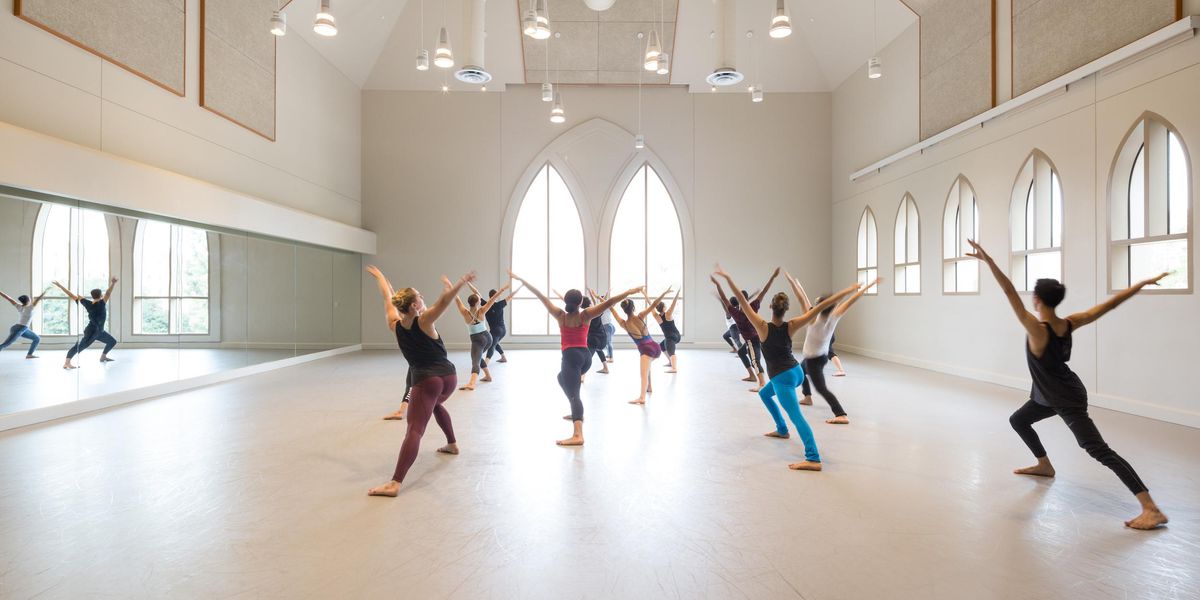Your Body Tips
Stretching for the Hyperextended
For dancers with hyperextended knees, stretching your hamstrings is no simple task. It’s far too easy to push back or lock into hyperextension, running the risk of overstretching—and irreparably over-lengthening—the ligaments in your knees. So how can you maintain the range of your extension safely? Jennifer Green, a physical therapist and founder of PhysioArts in New York City, recommends this stretch:
1.
Sit on a table or bed with one foot on the floor and the other outstretched in front of you.
2.
Place a small, rolled-up towel under your knee and a yoga belt or Thera-Band around the ball of your foot on the table.
3.
Square your hips, pull on the belt so your foot fully flexes and tighten your quad so you straighten your knee into the towel but not into hyperextension (your calf can lift slightly off the table, though you shouldn’t pull it up with the belt). When engaging the quad, think about reaching the heel long rather than jamming the knee back.
4.
Lengthen your spine and hinge forward while keeping a slight sway in your back.
5.
Hold for 30 seconds.
Why it works:
The active quad contraction helps relax the hamstrings, the towel helps prevent hyperextension and the belt around the foot helps stretch the calves, which tend to be very tight in hyperextended dancers.
Photo by Nathan Sayers, modeled by Hannah Cullen of NYU/Tisch School of the Arts.
Try an Athlete’s Workout
Need a boost of cross-training inspiration? The free Nike Training Club app offers more than 100 workouts that you can stash right in your dance bag. Many are taken directly from the routines of top female athletes. Try Serena Williams’ 15-minute Core Power routine, or WNBA player Skylar Diggins’ Metabolic Meltdown—and track your progress over time in number of workouts, minutes and calories. Download it in Apple’s App Store or on Google Play.
Solve Soreness Faster
An orange a day might keep soreness away: A study at the University of North Carolina, Greensboro, found that people who took vitamin C supplements for two weeks experienced less soreness after performing challenging arm exercises. Fill up your meals with top sources of C by slicing mango, strawberries or kiwifruit into your yogurt, or tossing bell peppers, broccoli or cauliflower into salad, rice or pasta.
Mind Over Muscles
Sometimes by the end of petit allégro, it feels like your legs simply can’t keep moving. But it’s not your body that’s reached its limit—it’s your brain. While scientists used to believe that a buildup of lactate, adenosine triphosphate and certain acids was what caused us to slow down, they’ve since discovered that the muscle aches actually come from our nervous system. When you push further than you’re used to, the brain sends the message, “Whoa, let’s slow down. I don’t know if we can handle this.” And to keep our bodies safe, it often sends that message earlier than necessary; we actually have it in us to push harder, if only our neurons would chill out. When your muscles start complaining during class, give yourself a gentle reminder that it’s probably okay to continue a bit longer.
Quick Tip:
Processed foods not only contain unhealthy additives and preservatives, they’re rarely as satisfying as whole foods. Think about it: Half a sandwich is more filling than the same calories’ worth of pretzels, and nuts are more filling than chips.




